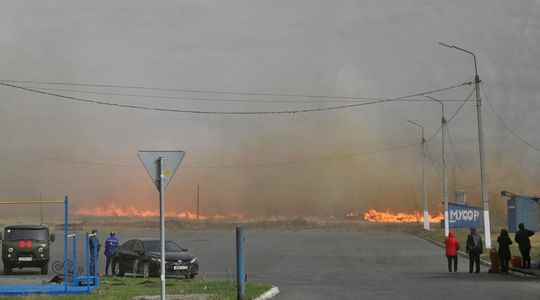Siberia is burning and the international community is looking elsewhere. As the eyes of the world are riveted on the war in Ukraine, the Krasnoyarsk region is on fire. For several years, Siberia has had to deal with numerous fires, this time aggravated by violent winds. A sad spectacle which is becoming usual in this region far from being spared by the global warmingplagued by forest fires for several years.
- How big are these fires?
Many fires are underway in eastern Siberia, burning hundreds of buildings and killing a dozen, local authorities said on Saturday. In the Krasnoyarsk region, more than 450 homes were hit and at least five people died, local authorities said. There are at least 17 injured, including ten hospitalized. A state of emergency has been declared in the region.
In Kemerovo oblast, three people were found dead in a burned house and a criminal investigation was opened. In the Omsk region, there are two dead and eight wounded.
On Twitter, the local media The Siberian Timesregularly posts images of the disaster. Beneath a series of photos, he captioned: “The remote Ubsuburskaya Kotlovina Biosphere Reserve in Tuva on the Russian-Mongolian border – home to many endangered species, including snow leopards – is on fire. Aviation firefighters are working at the site; the fire is believed to have been caused by human negligence.”
- How to explain the violence of these fires?
“Extinguishing is complicated by weather conditions – strong winds accelerate the spread of fires and make it difficult to put an end to them,” the Ministry of Emergency Situations of the Krasnoyarsk region said. Due to the wind, the fight against the flames can only be done on land, without recourse to aviation.
After holding an emergency meeting in the afternoon, the governor of the region, Alexandre Ouss, said in a statement that the fires had been caused by winds reaching in some regions 40 meters per second against 25m / s planned.
This wind is said to have caused “falling trees, overlapping and falling power lines”, following which “fires broke out simultaneously in many areas of the Krasnoyarsk Territory.” The meteorological institute “Rosguidromet has extended the forecast of strong winds to 20-25m/s for tomorrow, and even up to 30m/s in the mountains. But the risk of fire will gradually decrease due to cooling,” said to the TASS agency Roman Vilfand, director of the institute.
- How are these repeated fires linked to global warming?
“Such fires are rare in May. But it turns out that there was no precipitation for a long time, there were fires, plus a strong wind”, adds Roman Vilfand, specifying that the fires were d human origin.
Unprecedented fires have been ravaging Siberia for several years. In 2021, fires, particularly in eastern Siberia, released 16 million tonnes of carbon (4th highest volume since measurements began in 2003), according to the annual report on the European climate. In 2020, fires across the Arctic Circle emitted 244 million tonnes of CO2 equivalent, equivalent to Spain’s annual emissions.
These repeated fires were started by the drought and the high temperatures which suffocate Siberia. On June 21, 2021, the temperature of the earth’s surface rose well above 35°C, according to Copernicus, the European Union’s Earth observation programme. The region saw peaks of 43°C in Govorovo and 37°C in Saskylah. Thus, Siberia, one of the coldest regions of the planet, is not spared by global warming.
These high temperatures are caused by a blocking phenomenon as explained in an article by The Conversation published in August 2020: “At the mid-latitudes of the Northern Hemisphere, high and low pressure weather fronts generally move from west to east. They are driven by the ‘jet stream’, a fast wind located at altitude. ” Note that the system works in motion so that episodes of low pressure (which brings wind and more), drive out episodes of high pressure and vice versa. “However, weather systems sometimes remain blocked for a long period of time. Such systems lead to heat waves and drought in summer, freezing cold in winter”, resumes the publication.
